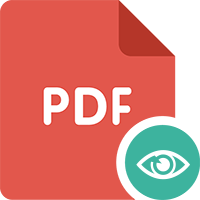Relationship between Competitiveness and Innovation: An International Business Perspective
Author Details
( * ) denotes Corresponding author
J. Schumpeter coined a conflicting term ‘Creative Destruction’, destruction of the obsolete with new innovation. Since 1970s, endogenous growth models have insisted on creating an atmosphere which stimulates science-technology –innovation. Romer and Lucas are pioneers in this area. Philippe & Howitt (1992) have developed a model with vertical innovation that serves as a key element of growth. Their model is rooted in creative destruction. A distinguishing feature of continuous economic growth is observed for countries which have strategies aligned with science-technology-innovation (Sefer & Sarıdoğan, 2011). With globalization, consumers’ appetite is insatiable. Firms and nations try to fulfil these desires and, in the process, compete against each other. Thus, investigating the relationship between competitiveness and innovation in the context of international business becomes crucial.
Keywords
Competitiveness; Economic Growth; Globalization; Innovation; International Business
- Aiginger, K. (2006). Competitiveness: from a dangerous obsession to a welfare creating ability with positive externalities. Journal of Industry, Competition and Trade, 6(2), 161-177.
- Alfred Jr., A.D.C (1990). Scale and scope: The dynamics of industrial capitalism. Cambridge, MA: Harvard University Press.
- Amsden, A. H. (1992). Asia’s next giant: South Korea and late industrialization. New York and Oxford: Oxford University Press.
- Apostu, S.A., Mirela, P., Gigauri, I. & Vasile, V. (2023). Foreign direct investment and competitiveness. Evidences from Romanian Economy. LUMEN Proceedings, 19, 36-47.
- Barney, J. (1991). Firm resources and sustained competitive advantage. Journal of Management, 17(1), 99-120.
- Bessen, J. (2020). Information technology and industry concentration. Journal of Law and Economics, 63(3), 531-556.
- Boltho, A. (1996). The assessment: International competitiveness. Oxford Review of Economic Policy, 12(3), 1-16.
- Brinkman G. (1987). The competitive position of Canadian agriculture. Canadian Journal of Agricultural Economics, 35, 263-288.
- Bristow, G. (2005). Everyone’s a ‘winner’: Problematising the discourse of regional competitiveness. Journal of Economic Geography, 5(3), 285-304.
- Cetindamar, D., & Kilitcioglu, H. (2013). Measuring the competitiveness of a firm for an award system. Competitiveness Review, 23(1), 7–22.
- Chacko, T.I., Wacker, J.G., & Asar M.M. (1997). Technological and human resource management practices in addressing perceived competitiveness in agribusiness firms. Agribusiness, 13(1), 93-105.
- Christensen, C. (1997). The innovator’s dilemma. Cambridge, MA: Harvard Business School Press.
- Christensen, C. M., Raynor, M. E., & McDonald, R. (2015). What is disruptive innovation? Harvard Business Review. Retrieved from https://hbr.org/2015/12/what-is-disruptive-innovation
- Chursin, A., & Vlasov, Y. (2017). Innovation as a basis for competitiveness, theory, and practice. Switzerland: Springer International Publishing.
- Chikan, A. (2008). National and firm competitiveness: A general research model. Competitiveness Review: An International Business Journal, 18(½), 20-28.
- Cho, D. (1998). From national competitiveness to block and global competitiveness. Competitiveness Review, 8(1), 11-23. Retrieved from https://doi.org/10.1108/eb046358
- Cho, D. S., Moon, H. C. & Kim, M. Y. (2009) Does one size fit all? A dual double diamond approach to country-specific advantages. Asian Business & Management, 8, 83-102.
- Cooper, R. G. (2008). Perspective: The stage-gate idea-to- launch process: Update, what’s new, and NexGen systems. Journal of Product Innovation Management, 25(3), 213-232.
- Czinkota, M., Ronkainen, I., Moffett, M., Marinova, S. & Marinov, M. (2009). International Business: European Edition. John Wiley & Sons.
- Dahlin, K. B. & Behrens, D. M. (2005). When is an invention really radical? Defining and measuring technological radicalness. Research Policy, 34(5), 717-737. Retrieved from doi:10.1016/j.respol.2005.03.009
- Damanpour, F. (1996). Organizational complexity and innovation: Developing and testing multiple contingency models. Management Science, 42(5), 693-716.
- Daniels, J., Radebaugh, L. & Sullivan, D. (2021). International business (global edition). Pearson.
- Delgado, M. & Ketels, C.H.M & Porter, M. & Stern, S. (2012). The determinants of national competitiveness. Working paper series (National Bureau of Economic Research). Retrieved from https://www.researchgate.net/publication/236903847_The_Determinants _of_National_Competitiveness
- Dodgson, M. & Well, R.R (1994). Innovation and Size of Firm. In M. Dodgson, & R. Roth-Well (Eds.), The Handbook of Industrial Innovation (pp. 310-342). Cheltenham: Edward Elgar.
- European Central Bank. (2008). Globalization and the Competitiveness of the Euro Area. Occasional Paper Series No. 97, Frankfurt: European Central Bank.
- Fontagné, L. & Pajot, M. (2001). Foreign trade and FDI stocks in British, US and French industries: Complements or substitutes? In N. Pain (Ed.), Inward investment, technological change, and growth (Chapter 9, pp. 240-264). Palgrave Macmillan.
- Griliches, Z. (1992). The search for R&D spillovers. Scandinavian Journal of Economics 94, 29-47.
- Gupta, H. & Nanda, T. (2015). A quantitative analysis of the relationship between drivers of innovativeness and performance of MSMEs. International Journal of Technology, Policy and Management, 15(2), 128-157.
- Hchaichi, R. & Ghodbane, S. B. (2014). Empirical analysis of determinants of international competitiveness. International Journal of Business and Social Science, 5(5), 203-209.
- Hippel, E. (1988). Sources of innovation. Oxford: Oxford University Press.
- Jaffe, A. & Trajtenberg, M. (1996). Flows of knowledge from universities and federal labs: Modelling the flows of patent citation over time and across institutional and geographic boundaries. NBER Working Paper 5712.
- Kahn, K. B. (2018). Understanding innovation. Business Horizons. Elsevier. 61(3), 453-460.
- Khalil, T. (2001). Management of technology: The key to prosperity in the third millennium. Oxford, UK: Elsevier Science.
- Kimberly, J. R. (1981). Managerial innovation. In Nystrom, P. C. & Starbuck, W.H. (Eds), Hand Book of Organization Design. Oxford: Oxford University Press.
- Knoll, M. S. (2009). The corporate income tax and the competitiveness of U.S. industries. University of Pennsylvania, Institute for Law & Economics Research Paper No. 09-01. Retrieved from https://papers.ssrn.com/sol3/papers.cfm?abstract_id=1330434
- Krugman, P. (1991). Increasing returns and economic geography. Journal of Political Economy, 99,483-499.
- Lall, S. (1992). Technological capabilities and industrialization. World Development, 20, 165-186.
- Lange, O. (1943). A note on innovations. The Review of Economic Statistics, 25(1), 19-25.
- Loecker, J. D. & Eeckhout, J.& Unger, G. (2020). The rise of market power and the macroeconomic implications. Quarterly Journal of Economics, 135(2), 561-644.
- Marginean, S. (2006). Competitiveness: From microeconomic foundations to national determinants. Studies in Business and Economics. Lucian Blaga University of Sibiu, Faculty of Economic Sciences, 1(1), 29-35.
- Martin, R. (2005). Thinking about regional competitiveness: Critical issues. Cambridge: East Midlands Development Agency.
- Momaya, K. (1998). Evaluating international competitiveness at the industry level. Vikalpa, 23(2), 39-46.
- Moon, H. C., A., Rugman, A. M. & Verbeke, A. (1995). The generalized double diamond approach to international competitiveness. In Rugman, A. M., J. V. den Broeck, A. Verbeke (Eds.), Research in Global Strategic Management, Vol. 5: Beyond the Diamond. Greenwich, CT: JAI Press, pp. 97-114.
- Morris, D. (1985). The Economic System in the UK. Oxford: Oxford University Press.
- Miller, T. & Kim, A. (2008). High corporate taxes undermine U.S. global competitiveness. Web Memo: The Heritage Foundation, 2065, 1–2.
- Nord, W. & Tucker, S. (1987). Implementing routine and radical innovations. Lexington, MA: Lexington Books.
- Organization for Economic Cooperation and Development (OECD). (1996). Oslo manual (2nd ed.). Organization for Economic Cooperation and Development.
- OECD/Eurostat. (2005). Oslo manual: Guidelines for collecting and interpreting innovation data (3rd ed.). The measurement of scientific and technological activities. OECD Publishing. Retrieved from https://doi.org/10.1787/9789264013100-en
- Oz, O. (2002). Assessing porter’s framework for national advantage: The case of Turkey. Journal of Business Research, 55(6), 509-515.
- Philippon, T. (2019). The great reversal: How America gave up on free markets. Belknap Press.
- Philippe, A. & Howitt, P. (1992). A model of growth through creative destruction. Econometrica, 60(2), 323-351.
- Podobnik, B. M., Horvatić, D., Kenett, D. & Stanley, H. E. (2012). The competitiveness versus the wealth of a country. Scientific Reports, 2(1), 678. Retrieved from https://www.researchgate.net/publication/230895919_The_competitiveness_versus_the_wealth_of_a_country
- Porter, M.E (1990). The Competitive Advantage of Nations: Are we matching ourselves against the toughest competitors and serving the most-demanding customers? How can we be more innovative? Harvard Business Review. Retrieved from https://hbr.org/1990/03/ the-competitive-advantage-of-nations
- Porter, M. E. (2003), The economic performance of regions. Regional Studies, 37(6/7), 545-546.
- Porter, M. E. (1998). The competitive advantage of nations. New York: Free Press.
- Posner, M. V. (1961). International trade and technical change. Oxford Economic Papers, Oxford University Press, 13(3), 323-341.
- Plessis, M. D. (2007). The role of knowledge management in innovation. Journal of Knowledge Management, 11(4), 20-29.
- Ricardo, D. (1817). On the principles of political economy and taxation. In Sraffa, P., Ed., The Works and Correspondence of David Ricardo, 1. Cambridge: Cambridge University Press.
- Rugman, A. M. & D’Cruz, J. R. (1993). The ‘double diamond’ model of international competitiveness: The Canadian experience. Management International Review, 33, 17–39.
- Rusu, V. D. & Roman, A. (2018). An empirical analysis of factors affecting competitive-ness of CEE countries. Economic Research-Ekonomska Istraživanja, 31(1), 2044-2059.
- Schumpeter, J. A. (1982). The “crisis” in economics – fifty years ago. Journal of Economic Literature, 20(2), 1049–1059.
- Schwab, K. (2010). The global competitiveness report. World Economic Forum.
- Sefer, Ş. & Sarıdoğan, E. (2011). The effects of science-technology-innovation on competitiveness and economic growth. Procedia - Social and Behavioral Sciences, 24, 815-828.
- Spencer, B. & Brandner, J. (2008). Strategic trade policy. In by S. N. Durlauf & L. E. Blume, The New Palgrave Dictionary of Economics. Basingstoke, Hampshire: Palgrave Macmillan.
- Summers, L. (1988). Tax policy and international competitiveness. In J. A. Frenkel (Ed.), International Aspects of Fiscal Policies (pp. 349–386). University of Chicago Press.
- Sengupta, P. & Puri, R. (2018). Exploration of relationship between FDI and GDP: A comparison between India and its neighbouring countries. Global Business Review: International Management Institute, 21(2), 473-489.
- Smith, A. (1976). An inquiry into the nature and causes of the wealth of nations. Edited and with an introduction, notes, marginal summary, and index by Edwin Cannan. Chicago: The University of Chicago Press.
- Terpstra, V., Foley, J., & Sarathy, R. (2012). International marketing. Naper Press.
- Thompson, V. A. (1965). Bureaucracy and innovation. Administrative Science Quarterly, 10, 1-20
- Urabe, K. (1988). Innovation and management: International comparison. Berlin, New York: Walter De Gruyter.
- Utterback, J. M. (1994). Mastering the dynamics of innovation. Boston: Harvard Business School Press.
- Van du Ven, A. H. (1986). Central problems in the management of innovation. Management Science, 32(5), 590-607.
- West, M. A. & Anderson, N. R. (1996). Innovation in top management teams. Journal of Applied Psychology, 81(6), 680-693.
- Wernerfelt, B. (1984). The resource-based view of the firm. Strategic Management Journal, 5, 171-180.
- Yu, D. & Hang, C. C. (2010). A reflective review of disruptive innovation theory. International Journal of Management Reviews, 12(4), 435-452.
- Zimmerer, T. W., Scarborough, N. M. & Wilson, (2008). Essentials of entrepreneurship and small business management (5th Edition). Upper Saddle River: Prentice-Hall.
 Abstract Views: 3
Abstract Views: 3
 PDF Views: 3
PDF Views: 3

